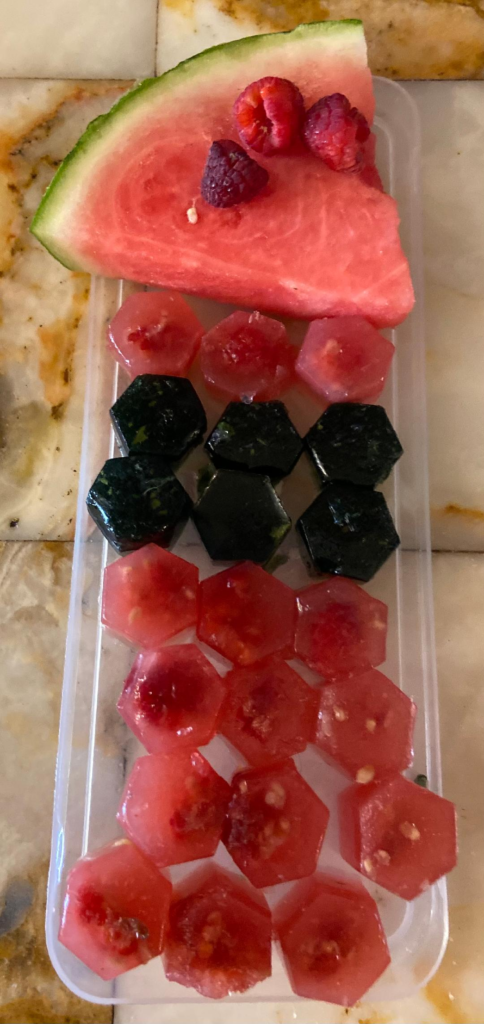Watermelon/Raspberry Gummies

Gummy Squares:
In these recipes we use pasture fed Beef Gelatin, however pork gelatin works well also. Chicken Gelatin is different, it takes more gelatin to gel. Chicken gelatin mostly comes from Taiwan
Watermelon/Raspberries Gummy
Ingredients
2 cups of seeded red or orange watermelon.
3/4 cup of cold filtered water
1 cup of filtered water
10 organic raspberries (or more)
1 tsp of ground ginger (optional)
1/3rd cup of grassfed gelatin
Directions:
Add gelatin to 3/4th cup of cold water and let bloom (dissolve). In a saucepan, heat 1 cup of filtered water. Place watermelon & ginger in processor and process until smooth. Add the pureed watermelon to the heated water then add the “bloomed” gelatin and let gelatin dissolve. If using molds or ice trays place 1 raspberry into each individual mold or into icetrays then pour or spoon gelatin mixture into the molds (or icetray). If using a bowl put all raspberries in bowl and pour heated melon gelatin mixture over raspberries. Refrigerate for about 2 to 3 hours. Will last about 5 days.
Use same technique for Cantaloupe/Blackberry Gummy



